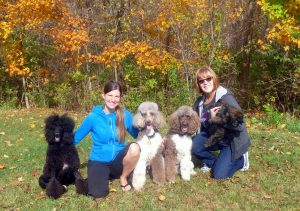
Breeder Pain points: rehoming a retired dog
The following blog post is about one of the hardest aspects of being a long time breeder. Many find, at a certain point, the need to rehome a beloved retired show dog. Be it because the dog would do better as a single pet or because the breeder can otherwise no longer continue breeding, this is one of the hardest aspects of breeding.
First off, why?
One knee jerk reaction people tend to have when you announce that you will be retiring a breeding dog is that you somehow feel that the dog is expendable, that the dog is being objectified, and the dog is solely about making money to breeders (let’s not get in to in this blog whether or not breeders are making bank on their dogs, but the short answer is no, not usually, if they are doing it right). So, let’s talk a little about breeding strategies and why a breeding program may need to retire, or place dogs that don’t work out for the breeding program. Many breeders will not choose to place dogs early on when they first begin breeding, but find it is necessary, if they wish to be a long term breeder.

Let’s assume if you are wanting a purebred dog, you believe they should exist because of their predictability and heritage. In order for a breed to evolve and exist, there need to be knowledgeable stewards of that breed. One cannot just breed one litter and pass the torch on to another, as knowledge of that line, health and temperament is tantamount to improving and moving generations forward. Seasoned breeders learn nuance of breeding; each breeding done is done for a purpose for their line. As such, they should keep a puppy or puppies intact from each breeding. If a breeder is fortunate to find a home that will aid in titling and keeping a dog intact for the future, that is great! But finding homes willing and able to keep pick puppies intact is difficult. So, the breeder often keeps one back in her home.
Now, it’s wise to breed a female at least twice. Why? Well let’s consider a scenario where you breed a female just once, and keep one or two intact. In a few years, disastrous health issues begin popping up in that litter, so much so that you decide that the offspring kept from that litter should not be bred. Had you done a second and different breeding, to a different stud, you might have offspring from that female line that would be safer to breed. Now you might say this is unlikely to happen, but sadly I learned this lesson early in my breeding years, when I repeated a breeding and years down the road both litters suffered several ailments, including sebaceous adenitis, Addisons disease, renal disease and bloat. That line is now gone from my program.
So, based on the above, you should keep at least two puppies from different breedings from each female in your program. Simple math tells you that your program can grow to large numbers of dogs in your home rather quickly if your breed is long lived. Say you breed at 4 years and again at 5, you go from 1 dog to 3 in that span. Breeding again at 4 years you go from 3 to 7…..and so on.
So a breeder is faced with how to handle this, and many do it differently: guardian homes, large kennels, and retiring adults that either do not work out for breeding or who have been bred and might excel as a single dog or one of just a couple. A combination of these program management strategies may be used.
So, we established why, what else should we consider?
Does it mean that a breeder doesn’t love these dogs they retire and place? No.
One of the hardest parts of breeding responsibly is choosing to place a retired dog. At a certain point, how much attention can a person give 5 dogs? 8? 10? For a breeding program to continue for decades breeders must keep puppies from their breedings. What happens if one doesn’t pass health testing? Would that puppy enjoy a better life as someone’s beloved and cherished pet as opposed to part of a large breeding program?
In my home, my dogs live as pets. Yes they have crates for sleeping, but they play in our living room, play fetch with my kids, go to our tball games and are in general a part of our life. I am honored to bring them in to the world in my hands and I love them from day one. I would not dare breed unless I had a passion FOR my breed, because this ultimate decision to seek a new home for my retired adults takes a piece of me every single time. Every. Single. Time.
A breeder must screen potential homes, with the adult dog’s temperament and personality in mind. They visit the new home, take their adult on walks with the potential families, and make this decision with caution. They truly want the best for these dogs, even if that means a life away from the home they grew up in.

Kathy and Jim, who guardianed my girl Bree before she was retired and showed her for her final UKC Grand CH leg.
How to approach breeders
First of all, don’t message or email a breeder and tell them you want to “rescue” their retired show dogs. You are getting the pick dog from a litter. One that has shown it was of value to contribute to a breed and one that more than likely was loved dearly. Occasionally we get this and it’s incredibly upsetting and disheartening; making the decision to place a retired dog or dog that didn’t work out can be incredibly painful to the breeder; try to be respectful about this aspect.
Send the breeder detailed information about your life, how their dog would live, and what your experience is with the breed. Read any information about the dog on the breeder’s website you can find. For example, is this dog a high drive dog? If so, how will you meet the needs of that dog?
Be patient. Breeders need to take time to get to know potential homes, many are cautious about where they go. Be willing to have them visit your home, take the dog on a walk with you and ask for references.
Be willing to sign a contract. Many breeders require a contract to require the retired adult to be returned to them if you cannot keep them. Some may require certain restrictions on vaccinations for breeds at risk of autoimmune disease.
In conclusion
Breeders who are breeding for the improvement and love of a breed often are faced with the necessity of retiring and placing adult show dogs. It can be a difficult decision for breeders. We are lucky to find excellent homes who become like family to us, but that does not make it easier to do. We thank those who have opened their homes to a beloved retired dog and thank those of you supporting breeders by doing so, because this allows them to continue to contribute to their breed’s preservation by being able to continue to breed.
 Previous Post
Previous Post Next Post
Next Post


